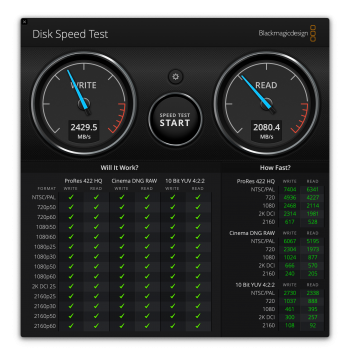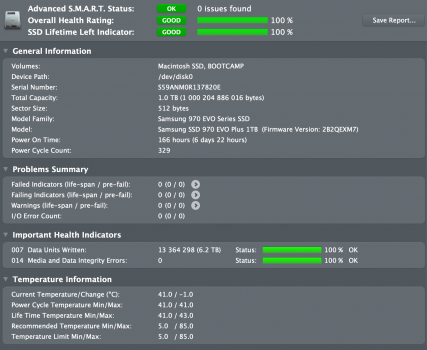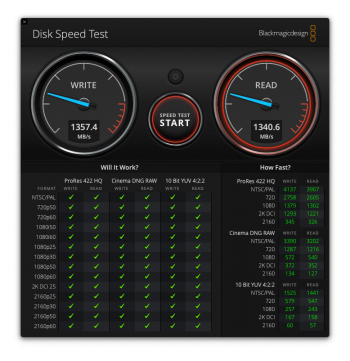Thank you for this very informative thread which helped guide me through the process of upgrading the SSD in my MacBook Pro. I wanted to add my experiences doing this to the thread, in case they are useful.
System:
MacOS version: Mojave 10.14.6 (18G8022)
Mac: MacBookPro11,3
Processor: Quad-Core Intel Core i7 2.3GHz
Boot ROM Version: 430.0.0.0.0
SSD: Crucial P2 2TB (updated to firmware version: P2CR033) + Sintech short adapter
and then
SSD: Sabrent Rocket 2TB (firmware version RKT303.4) + Sintech short adaptor
I initially installed the Crucial P2. However in testing copying of large sets of data, I observed very slow writes (down to about 69 Mb/s) after around 100 Gb of data had been copied. I did various experiments reading, writing and deleting files to understand the behaviour, and consistently saw drops down to this very slow speed, without observing any obvious temperature spikes or other potential causes for a slow down. This made me suspicious that the Crucial 2Tb SSD might now be using QLC memory rather than TLC. Searching the web I found
this discussion which seems to confirm my suspicions (although I can't be absolutely sure). I knew QLC wouldn't fit the way I would use the disk, so I decided to replaced the Crucial with a Sabrent Rocket (easier to do straight away while I had all the backups, installation USBs etc availabe). The Sabrent is giving me good performance even with big transfers (around 1350 Mb/s SLC cached and 800 Mb/s uncached).
After installing the Sabrent I have also done the following:
1) Reduced idle power consumption on Sabrent:
Initially: Idle at around 0.18 Amps
With SSDPMEnabler: Idle at around 0.08 Amps
With SSDPMEnabler + NVMEFix: Idle at around 0.03 Amps
2) Installed the latest OS X Mojave security update which included an update to the boot ROM (431.0.0.0)
- boot ROM updated successfully with the Sabrent SSD installed
- kexts continued to work
3) Installed Bootcamp Windows 10 without needing to do the Shift + F10 regedit fix.
- did the inital install without networking, as suggested in a
previous post, but can't be sure if that was needed.
- did the install on mains power
- modified PCI express power management settings in Windows to the 'moderate' setting
- No BSODs during or since install
So overall it's gone quite well. I'm very pleased to have the extra storage and improved performance compared to the original Apple SSD. The Crucial P2 is now in an external enclosure, and I'll use it for something else. I'd say the most difficult thing was choosing the right model of SSD, given that some manufacturers seem to varying the components they are using within products, so it can be a bit difficult to determine what you're actually going to get.






